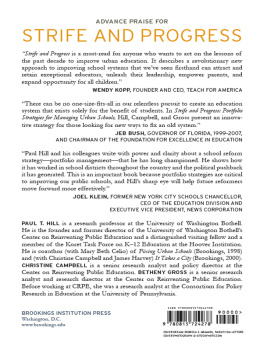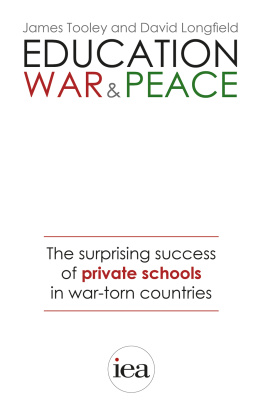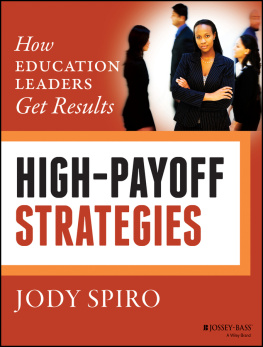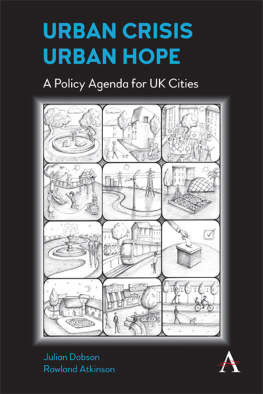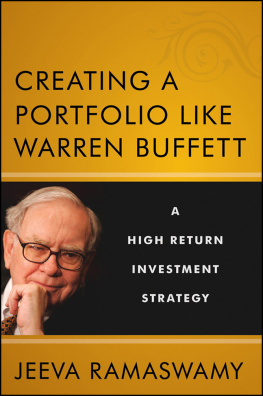Acknowledgments
The people we most need to thank for help with this book are the hundreds who let us interview them or who took part in focus groups. Since we promised anonymity, we can't name them, but they know who they are. They include school district and city officials, business and union leaders, principals, local journalists, foundation staff, and heads of parent, teacher, and community groups in all the cities we studied.
We can name and thank those who contributed ideas and criticism of the work, starting with Michele Cahill, Robin Lake, Sarah Yatsko, Shannon Murtaugh, Jeffrey Henig, Jennifer O'Day, David Menefee-Libey, Mary Vaiana, James Harvey, Sam Sperry, Bruno Manno, Robert Reichardt, Paul Teske, Patrick Murphy, Deb Britt, and Libuse Binder. None of these generous commentators misled us in any way. Any errors or misinterpretations are ours alone.
CHAPTER ONE
Introduction
Yolanda (not an individual but a composite) is a fourteen-year-old girl who attends a New Orleans charter school. She was eight in 2005, just about to enter third grade, when Hurricane Katrina forced her family to flee the city and separate in order to live with relatives. She spent several months out of school but eventually enrolled in elementary school in the small town in Texas where her mother's sister lived.
Schools in the Texas district were not considered at all advanced, so teachers in her new school were surprised to find out how far behind the other students Yolanda was. After trying placement in second grade, they returned her to a third-grade classroom but provided as much extra tutoring as they could.
Her father's work experience helped him get a job with a new construction company in New Orleans in early 2007, so her family was able to reunite and return to the city. Though the house the family had rented before the hurricane was destroyed, the family was able to rent a unit only a mile away. After a few weeks of moving and repairing a rental duplex that was not as renovated as promised, her parents contacted the Recovery School District and arranged for Yolanda's placement as a fifth grader in a new K8 charter school.
The new school is run by a combination of New Orleans business people, college administrators, former New Orleans teachers, and teachers recruited from outside the state. It serves students like Yolanda, many of whom have experienced interrupted education, family separation, and loss of their old home. Moreover, most had been performing well below grade level in the schools they attended before the hurricane.
Throughout this book, we return to Yolanda's story and those of children, parents, and teachers in other cities. In the meantime, a debate rages about whether it is fair for Americans to demand more of their public schools. One side argues that high dropout rates and low achievement, especially among poor and minority students, are rooted in poverty and social conditions that schooling cannot overcome. The other side argues that schools do far less for poor and minority children than they could if they made better use of the time, money, and talent available to them. The debate has become nasty, with the first side claiming that schools and educators are being blamed for society's failings, and the second claiming that teachers unions and other defenders of the status quo put their own interests before those of children.
As is usual in polarized debates, both sides ignore inconvenient facts. Some schools are making innovative uses of time, money, and teaching methods and are having dramatic success with children who are otherwise likely to fail. However, even the most effective schools for disadvantaged children still don't work for all at-risk students. In particular, no one has found a way to reach the small minority of students who do not attend school faithfully and do not do the assigned work. Thus neither side's claims fit all the facts. In their candid moments, debaters on both sides concede both that poverty impedes many students and that many schools serving the poor are poorly staffed and inefficient. But neither side is about to abandon the debate, fearing that the other side would, if left unopposed, either totally dismantle public education or block reasonable efforts to improve it.
We are writing this book because we believe that both sides are partly right and that the current stalemate is harmful to everyone. It is possible both to maintain the core values of public educationincluding public oversight, a commitment to equity, and fair treatment of educatorsand to organize public education so that it is always open to new ideas and new sources of talent. Stalemate leaves Americans in the worst possible position: millions of children leaving school unprepared to be effective participants in a competitive global economy and an increasingly complex political system.
Our goal is to explain a strategy that is emerging in many big cities. The strategy would preserve public education by transforming it from a stagnant entity that cannot adapt to the needs of its students into a dynamic public enterprise engaged in a constant search for the set of schools and instructional experiences that best meet the needs of a diverse urban student population.
TABLE 1-1. Financial and School District Portfolios
| Financial portfolio | School district portfolio |
| Diverse investments | New and promising school options |
| Constant review of performance | Sophisticated accountability systems |
| Strategic investment and divestment | Expand successful programs, intervene in or close unsuccessful programs |
The Portfolio Strategy: What It Is and What It Isn't
The portfolio strategy, often introduced by mayors and others concerned with a city's future viability, is so named because it is founded on an idea similar to a financial portfolio (). A financial manager aims for a diverse portfolio that performs well. She avoids betting everything on one investment, knowing that some holdings will perform much better than expected and some much worse. This manager is agnostic as to which companies are represented but knows that diversity is key and regularly reviews performance as well as industry and company news. When some stocks make impressive gains, more of those are added, and when some are trending poorly, those are sold.
A school district portfolio manager thinks the same way. No school model is right for every child, so the district needs a diverse array of schools. By constantly reviewing school and student outcomes, as well as school climate and neighborhood need, the portfolio manager knows which schools are both performing and trending well, which schools have the possibility of improving, and which schools must be replaced with options that are right for the affected students. Portfolio district managers also track performance closely and make sure everyone in the system has access to good data. The portfolio strategy is a way to seek a solution to a problem that has never been solved before, akin to the methods used to discover remedies to previously incurable illnesses or to develop computers that can do things previously thought impossible. In K12 education the problem to be solved is how to effectively educate all the children in a large city, including those from the most disadvantaged homes. The portfolio strategy does not assume that the best methods known today will always be the best available. Instead, it incorporates a spirit of continuous improvement, always asking, Is this the very best we can do for our community's children?
Next page
